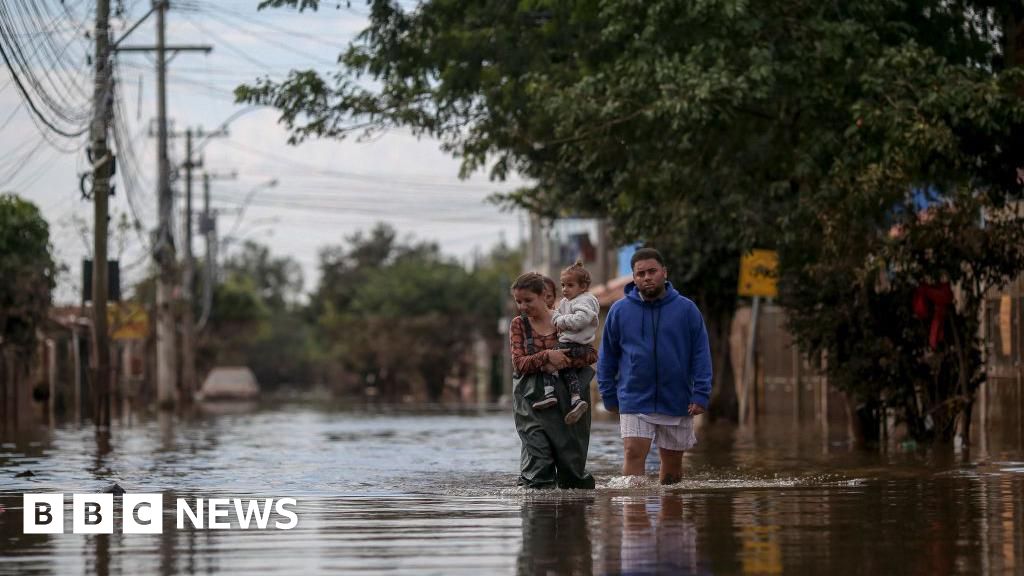
Image source, Getty Images
- author, Malo Corcino
- Role, BBC News
Authorities in the Brazilian state of Rio Grande do Sul have confirmed 54 cases of waterborne leptospirosis after the region witnessed unprecedented floods in April and May.
Four others died after contracting the disease, which is transmitted through water contaminated with the urine of infected animals such as rats.
The state Department of Health said in a statement that up to 800 suspected cases are currently being investigated.
More than 165 people died in the floods and many others are still missing.
More than 2.3 million Brazilians from 469 municipalities in Rio Grande do Sul have been affected by what the Brazilian government has called a “climate catastrophe.”
At least 581,000 people have been displaced, while temporary accommodation has been able to house 55,000 gauchos (people from Rio Grande do Sul), according to local media reports.
Many cities in the state remain underwater and conditions could lead to a rise in leptospirosis cases.
Symptoms of the disease include fever, muscle pain, and nausea followed by vomiting.
Image source, Getty Images
The state Department of Health warned residents that floodwaters may mix with sewage, leading to the transmission of diseases such as leptospirosis and hepatitis A.
Brazil is vaccinating its population against hepatitis A, but due to the scale of this is advising people to avoid consuming water or food that may be contaminated with water from floods.
Recovery and rescue efforts are continuing, and the federal government has allocated more than R$1.8 billion (£275 million, $348 million) to support Rio Grande do Sul.
As flood waters recede, the full extent of the damage to Brazil’s southernmost state has become more apparent. Those who were able to return to their homes are trying to salvage their properties that withstood the floods.
Rio Grande do Sul has a population of more than 10 million in 497 municipalities. The country borders Uruguay and Argentina.
Image source, Getty Images
“Climate disaster”
Critics of the Rio Grande do Sul government accused the state governor of complicity in the damage caused by his stance on environmental policies.
In an article published on the Folha website, journalist Eleonora de Lucena writes that right-wing leadership in Rio Grande do Sul means that local politicians serve the interests of soy farmers and neglect environmental protection obligations.
Under the leadership of Governor Eduardo Leite, more than 400 changes were made to the state’s environmental legislation, including a law allowing the construction of dams in environmentally protected areas.
But during an interview with BBC Brazil last week, Light defended his policies, adding that dams in protected areas would allow food production.
The floods were the result of unprecedented heavy rains in the region. But the collapse of a hydroelectric dam after days of heavy rain at the beginning of May exacerbated the exodus.




More Stories
Journalists convicted in Hong Kong sedition case
Stand News: Hong Kong journalists convicted of sedition in case critics say highlights erosion of press freedom
Shark decapitates teen off Jamaica coast